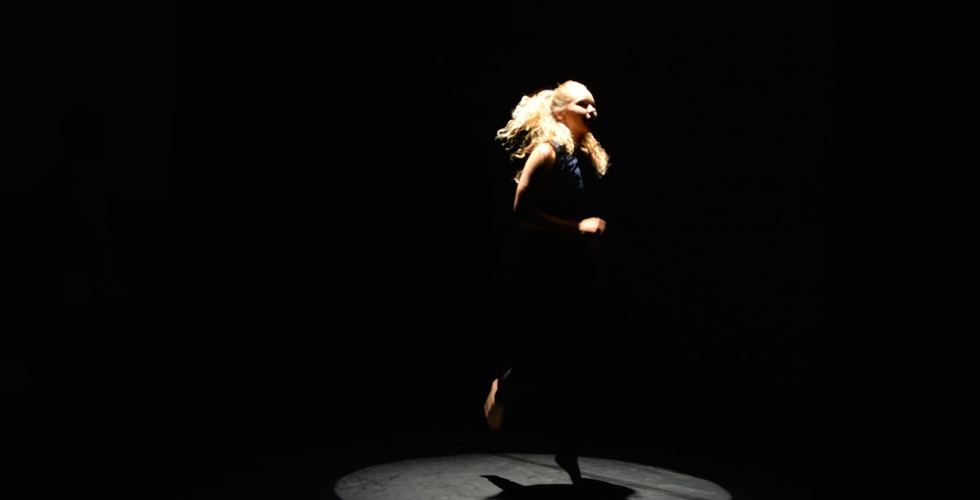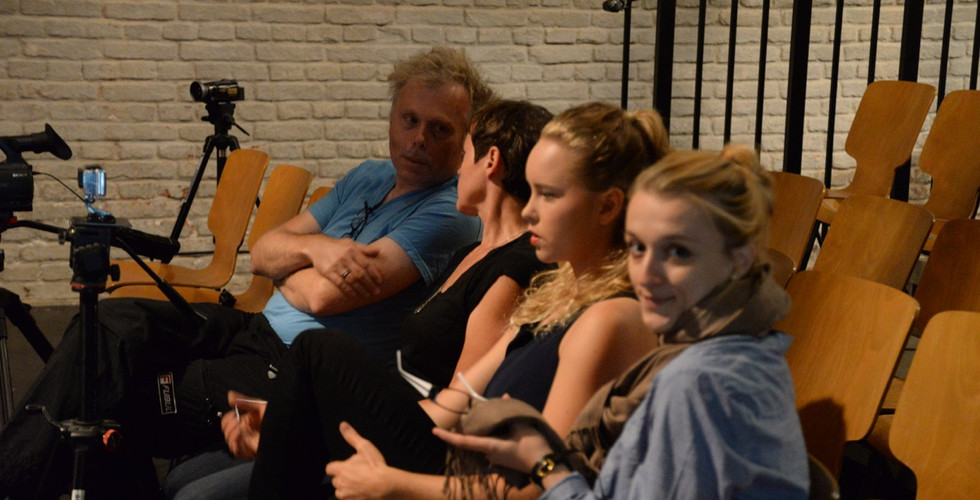H.O.M.E. in Dance: Interview with Choreographer Yasmin Schönmann
- angelaschopke
- Dec 15, 2015
- 6 min read
H.O.M.E. in Dance: Interview with Choreographer Yasmin Schönmann - Angela Schöpke sits down for a conversation with Yasmin Schönmann, curator and choreographer of dance performance and film series, H.O.M.E. H.O.M.E. featured an evening of live dance performances and dance films developed by an international team of choreographers, presented on July 30th, 2015 at Einstein Theater in Munich, Germany. The series was inspired by the following series of questions: “What is home? Where do I feel at home? Can my profession/ be my home? How strongly do language and culture influence my identity?”
----
As many people, it is not infrequently that I find myself considering identity questions, the notion of belonging somewhere, the idea of “home,” what it means, etc. etc. Most of my academic, political, and dance work either quite explicitly indulges these questions (e.g. research regarding Afghan identity via dance, “CableTable,” and others), or do so implicitly (e.g. most of my articles for CultureBot).
As such, when I learned about German choreographer Yasmin Schönmann’s curated dance performance and film series, H.O.M.E, I was compelled to learn more about how a fellow dancer and choreographer had approached these challenging identity questions. Last week, I had the chance to sit down with Yasmin for an interview to learn more about her approach. Many thanks to Yasmin for taking the time to share her thoughts and explorations of identity through dance. Here’s what she said.
A: Tell me more about H.O.M.E. What was the curating experience like?
Y: Well, it was my first time curating a series of works. Initially, I was overwhelmed by the bureaucracy of organizing space, time, money, the works. But it was a really good learning process. Next time, I’ll know how to do things much more efficiently and understand which things I might ask for help with instead of trying to do everything by myself. I think I received maybe 40 film or choreography submissions via an online submission process I had set up. In the end I selected three dance films and three live choreographies. It was definitely a challenge to select so few from so many! In the end, the things that moved me to select some over others were the choreographers’ approaches to the subject of home. Through those that I selected, I felt I learned something new or gained some insight about the idea of home that I hadn’t considered before. That was very important to me.
A: What struck you as interesting or different about the choreographers’ approaches to home that you selected to present their works?
Y: The French choreographer, Juliette Rahon, was really good with gestures. We started with a text about identity and home, and we thought about how we would translate that to movement. We ended up creating something that felt almost like a sign language. Gestures.
The Danish choreographers, StampElverdal Collective, had a more abstract approach. It was more the feeling of home they created – music, movement, lighting working together to create an emotional experience – rather than the specifics of body language that the French choreographer was more interested in.
For my piece, my inspiration was the Australian dancer, Katie May Douglas, that I worked with. I was fascinated that she came to Germany, lived there for three years, didn’t go home for two. So her introductory solo was about making that decision to move. So many things are tied up in a decision to leave a place one calls home. Just the practical things alone – the visa, the money, the place you live, all of that. In her solo, the feeling we worked towards was that of taking two steps forward and one back.
For the second part, which featured five dancers, I tried to design a sort of big city feeling. It was really fascinating to work with international dancers, because each one really had a particular character. It was like all of these different people waiting for the subway – they’re all different, but they’re all there for the same reason. In this case that reason was to find a new home.
A: You’ve spoken a little bit about what it was like to explore the idea of home through choreography. I’d love to hear more about how you translated a cerebral idea into a physical dance.
Y: Well, there were definitely intentions with every movement. Some individual movements had specific literal meaning, while others worked together to make a meaning. It was really important for me to give the audience a new insight. For me the questions about home were our discovery process. What we offered the audience was new insights about possible answers to those questions.
For example, at the beginning of the dance, each dancer had a distinct walking pattern. Each dancer was disconnected from other dancers in a way. Towards the end of the piece, we combined these different walking patterns. From each person’s pattern we took some movements, built a new movement series, and the dancers performed this series in unison. For me, that’s a good example of communicating the feeling of connection I associate with home versus disconnection, which I find to be the antithesis of home, through a movement language. In this example, I felt we communicated that idea via relationships of bodies in space and shared movement language: being an individual versus being part of a group.
A: What about dance do you feel was particularly compelling to you as a medium through which to communicate ideas about home?
Y: I think humans have always danced. Dance is very old. Body language is a part of human nature. I think that dance, everyone can relate to. For me, it’s just that dance is the best way to express my emotional experiences. Being creative with my body gives me the best access to explore feelings or topics, to interpret music… dance just makes sense as the best medium for me to explore questions and ideas.
A: Are there things you’ve learned from your experience exploring identity questions and questions about home that have remained with you following the conclusion of H.O.M.E.? Are there ideas that you’ll continue exploring in your future work?
Y: Yes, definitely. When we were working on H.O.M.E., a lot of our discoveries came back to approaches to communicating. I found I really enjoyed the idea of communicating through smaller gestures. Like Pina Bausch – she would take these small movements and take them out of context in a new place, and those small gestures would become or mean something totally different. I think I learned that the story you tell should have certain elements everyone understands. It could be gestures, or it could be feelings, but I think I learned the importance of storytelling in dance.
Also, I think putting film and dance together is just a very smart way to show more people what dance is, what contemporary dance is. You can definitely do a lot things with film, like cut from this jump to another jump, this place to that place. It’s a smart way of watching dance too. I wanted to include the film component in H.O.M.E. to show the audience different approaches to dance.
Actually choreographing for film is also like another experience. With film, you end up spending most of the time editing. In the studio, you spend time on cleaning. So in film, the focus is more on the editor: he or she has the final say on what comes out of it. In the studio, it’s more like the team who all have an influence on the live performance and outcome. Interestingly, in selecting works for the program, the criteria for selection across media were pretty much the same for me – storytelling and emotion.
A: So all of this said and done, where do you feel at home?
Y: You would think, maybe in my room or my apartment, but I experienced that’s not always the case. I think for me it’s very connected to the people I live with. It can also be the dance studio, like where I studied in Munich. That was one place where I really felt home. I knew all the teachers, the students, everywhere. As long as you feel that you know your way around, that you’re not a kid lost in a big city.
A: Do you think your profession can be your home?
Y: I think so. Especially in the arts, since artists pursue the arts because they really don’t have another option. It’s part of who they are and they can’t give it up. So I would say that your profession can be your home if you’re passionate and ready to move for it, maybe?
A: Do you feel like you’ve found a home everywhere you’ve danced?
Y: Hmmm, no. I wouldn’t say so. Like in London, I didn’t feel at home really, but I danced there. It was a short time I was there. London is a huge hectic city, so I didn’t really have time to settle.
I really liked Barcelona when I visited as a tourist. I felt really relaxed and at home. But then when I was dancing in Barcelona, I felt really stressed making it to rehearsal on time, making sure my body felt ready to dance...
So I guess maybe there’s more to it than finding home just in your profession. Maybe it’s a mix of things that together make me feel at home: my profession, the people, and maybe the place.
















Comments